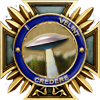Movie makers were some of the early adopters of drone technology. Today, the movie industry continues to push the limits of UAV capabilities to get the best shot of the action. Both Game of Thrones and Mission Impossible 6 wanted to show “never before seen on TV” graphical effects while guaranteeing safety on the set. The only possible solution to achieve this: an Oscar winning unmanned helicopter made by a company called
Flying-Cam, equipped with top-of-the line filming and GPS technology.
On the set of the Game of Thrones
April 14, 2019 Game of Thrones launched its 8th and final season. In a series that HBO calls “the most popular show on TV” with a budget of $15 million dollars per episode, no expense is spared to create the most breath-taking images ever seen on TV. Season 7’s episode 4 won the show 2 Visual Effects Society Awards with its “Loot Train Attack” scene, combining the latest in visual effects technology with cutting edge cinematography techniques. In this scene Daenerys Targaryen takes matters into her own hands and flies atop her fire-breathing Drogon, leading her wild Dothraki cavalry against the Lanister army.
Filming challenges
“We needed to sell speed. And we needed to shoot elaborate dragon’s points of view.” Said Matt Shakman, film director. Below is a list of challenges that Matt was faced with to make his dream-scene happen.
- Flying the camera high enough to provide a wide-angle downward shot of the huge dragon who is flying 30 m (98 ft) up in the air over the battle scene, breathing out a column of fire 10 m (33 ft) wide.
- Flying the camera at a speed of 100 km/h (62 mph) over several kilometers to show the speed of the flying dragon.
- To guarantee the safety of people on the set below, the flying camera needs to follow a precise route at full speed.
Filming solution
The answer: An unmanned helicopter engineered by a company called Flying-Cam, who have been pioneering top-performance UAV technology since 1986. Two times Oscar winner and one time Emmy award winner, this helicopter could follow a precise flight-path while filming from above with a top-quality gimbal camera. Here are some of the specs of this unique UAV.
- VTOL Auto take-off, auto-piloted waypoint navigation and return to launch
- Septentrio GPS/GNSS receiver providing RTK centimeter-level precision of flight needed for set safety
- Heading orientation provided by a dual frequency GNSS receiver and a dual antenna setup
- Highly stable due to its single rotor, and maneuvering at over 100 km/h (62 mph) in forwards or backwards flight, it could capture the speed expected from a fully grown dragon
- Unique ability to film “through” the rotors by adjusting rotor speed and camera frame rate
Flying-Cam helicopter ready for take-off at the filming site of the Game of Thrones.
“With about 500 people on the set, precision was key to make sure we fly exactly in the area that was planned” – said Emmanuel Prévinaire, founder of Flying-Cam
Each video frame was time stamped with GPS time and then
geotagged with RTK centimeter-level positioning and camera orientation angles, which in turn allowed the graphical effects team to add in the flying dragon precisely as planned. The combination of computer animation with a real background and a real person made the whole scene come to life.
Actress Emilia Clarke on top of a metal motion base which is moving in sync with the animation of the dragon. HBO
Mission Impossible 6 – Photogrammetry in the heart of Paris
Flying-Cam’s helicopter also had a role to play alongside Tom Cruise in Mission Impossible 6. The film’s visual effects team needed a detailed 3D reconstruction of the Grand Palais. This meant a photogrammetry flight in the center of Paris less than 500 m (547 yd) from the Presidential Élysée Palais.
A challenge arose when the Flying-Cam’s team spotted significant magnetic interference coming from the subway below the street where their helicopter was standing for take-off.
“The only way for us to take off in that location was with the use of Septentrio dual GPS antenna on board. Thanks to the heading solution and precise positioning, we could take off and fly out of the magnetic disturbance.” said Emmanuel Prévinaire “We also witnessed very clean positioning during the whole 3 hours timeslot, which was key for
geotagging more than 1000 images taken during this photogrammetry flight. “
Georeferencing and navigation solutions anywhere
Navigating a precise flight-path on a movie set, accurately georeferencing photogrammetry data or other industrial flight missions rely on high-accuracy GPS / GNSS positioning and orientation information. Septentrio
AsteRx-i receiver combines centimeter-level RTK positioning with precise 3D orientation from a high-grade MEMs IMU (Inertial Measurement Unit).
Advanced Interference Mitigation (AIM+) technology shields the receiver from internal or external interference. Accompanied by a UAS-tailored carrier board it can be integrated seamlessly into your aerial vehicle. Who’s up for a “Game of Drones”?




















